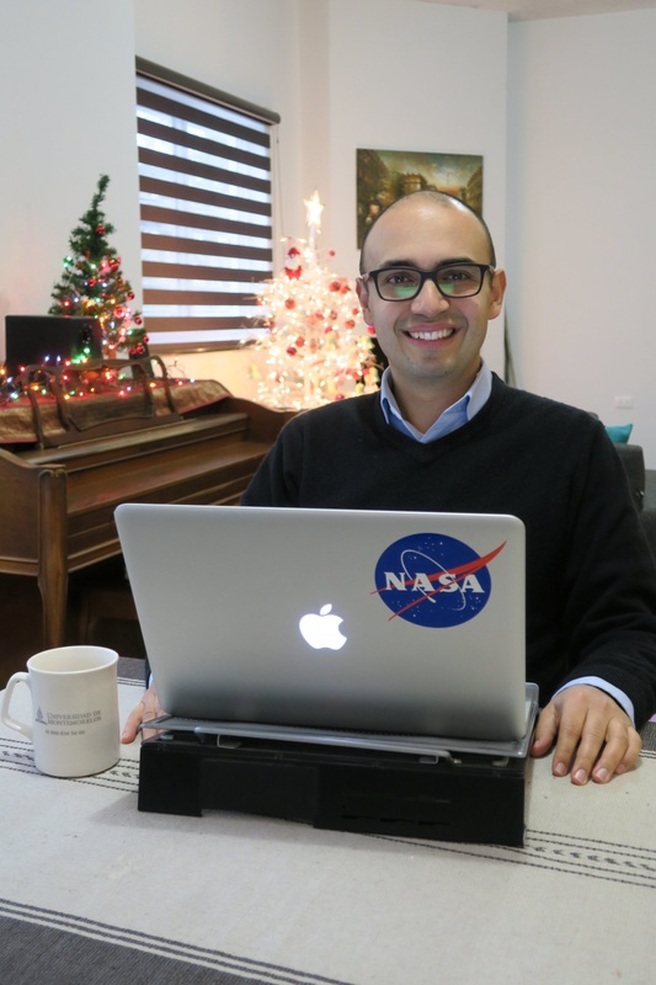Harvey Alférez, Ph.D Data Scientist, School of Engineering and Technology, Montemorelos University, Mexico A couple of months ago, I got shocked when I read two articles, one in The New York Times and another in The New Yorker. Let me share their titles: "A Toilet, but No Proper Plumbing: A Reality in 500,000 U.S. Homes” [1] and “I Feel Forgotten”: A Decade of Struggle in Rural Ohio [2]. These articles reflect the distressing reality of certain areas in the US. As Seventh-day Adventists, we have been called to minister people’s spiritual, physical, and mental needs. In fact, “Christ's method alone will give true success in reaching the people. The Savior mingled with men as one who desired their good. He showed His sympathy for them, ministered to their needs, and won their confidence. Then He bade them, 'Follow Me.'" [3]. Have you wondered about how to discover the needs of people in your own neighborhood or city? I mean not just to grasp their needs in the past but also to understand their current and future needs. In this sense, I believe that God has called us to follow the steps of the Tribe of Issachar (1 Chronicles 12:32): those who understand the times and what the church should do. Let me be a little bit technical at this point. Traditional database methods (e.g. usage of relational databases such as MySQL and PostgreSQL) have been used in the church to query data and create reports to try to understand trends in the past with historical data. For instance, they have been used to answer questions like these: How many baptisms did a conference have in the last five years? How many churches have been built in a particular area in the last year? Certainly, database methods have been important for the church. However, they “are not suited for knowledge discovery because they are optimized for fast access and summarization of data, given what the user wants to ask, or a query, not discovery of patterns in massive swaths of data when users lack a well-formulated query. Unlike database querying, which asks ‘What data satisfies this pattern (query)?’ discovery asks ‘What patterns satisfy this data?’ Specifically, our concern is finding interesting and robust patterns that satisfy the data, where ‘interesting’ is usually something unexpected and actionable and ‘robust’ is a pattern expected to occur in the future” [4]. This discovery process is known as data science, which is the new statistics. Although data science is not restricted to only big data, the fact that data is growing and the invention of tons of new tools for big data analysis open a new era for data science [5]. Moreover, relational database engines are incapable of supporting the current volume of data measured in petabytes and exabytes, the real-time unpredictable ingestion of data, and the variety of data (audio, video, graphs, text, etc.). An interesting discussion about the pitfalls of relational databases to handle big data is presented on [6]. My invitation is to understand the times by looking for interesting and robust patterns that satisfy small and big data. These new approaches could help us to answer questions such as the following: Which are the most common diseases in a particular region according to demographic data? What is the correlation of the location of churches, evangelistic social media campaigns, and particular needs in a borough? How many children and youth will be located at your neighbor in the next five years? Do you want to follow the pathway of the Tribe of Issachar? If so, you are welcomed to join me in an exiting journey to envision strong data science and big data approaches for the church! References: 1. S. Tavernise, “A Toilet, but No Proper Plumbing: A Reality in 500,000 U.S. Homes” (2016), http://www.nytimes.com/2016/09/27/health/plumbing-united-states-poverty.html?_r=0. 2. K. Linthicum, “’I Feel Forgotten’: A Decade of Struggle in Rural Ohio” (2016), http://www.newyorker.com/culture/photo-booth/i-feel-forgotten-a-decade-of-struggle-in-rural-ohio. 3. E. G. White, The Ministry of Healing (Mountain View, CA.: Pacific Press Pub. Assn., 1905). 4. V. Dhar, “Data Science and Prediction,” Communications of the ACM 56, no. 12 (2013): 64-73. 5. Z. Wu and O. Beng Chin, “From Big Data to Data Science: A Multi-disciplinary Perspective,” Big Data Research 1, no. 1 (2014): 1. 6. N. Marz and J. Warren, Big Data: Principles and Best Practices of Scalable Real-time Data Systems (Greenwich, CT.: Manning Publications Co., 2015).
Angie
1/6/2017 09:04:54 pm
Awesome challenge! If we do it in our job to get revenue to someone... Why no do it for the benefit of the church? Love your initiative guys ! Comments are closed.
|
Archives
August 2020
Categories
All
|
- Home
- BLOG
-
RESOURCES
-
RESOURCE MENU
>
- ADVENTIST IDENTITY GUIDELINES
- BIG DATA RESOURCES
- BRANDING, IMAGE & DESIGN RESOURCES
- CHURCH/MINISTRY SPECIFIC RESOURCES
- COPYRIGHT & TRADEMARK BASICS
- COURSES
- EMAIL RESOURCES
- GUIDANCE FOR HIRING SOCIAL MEDIA POSITIONS
- PODCASTS
- REPORTS & CASE STUDIES
- SOCIAL MEDIA RESOURCES
- (SOCIAL) VIDEO RESOURCES >
- TEXTING 4 CHURCHES
- TRACKING & ANALTYICS
- WATCH VIDEOS & TUTORIALS
- WEBSITE TIPS
- SOCIAL MEDIA GUIDELINES
-
RESOURCE MENU
>
- SEO
- Digital Discipleship & Evangelism
- COVID-19 RESOURCES
- eNEWSLETTER



 RSS Feed
RSS Feed